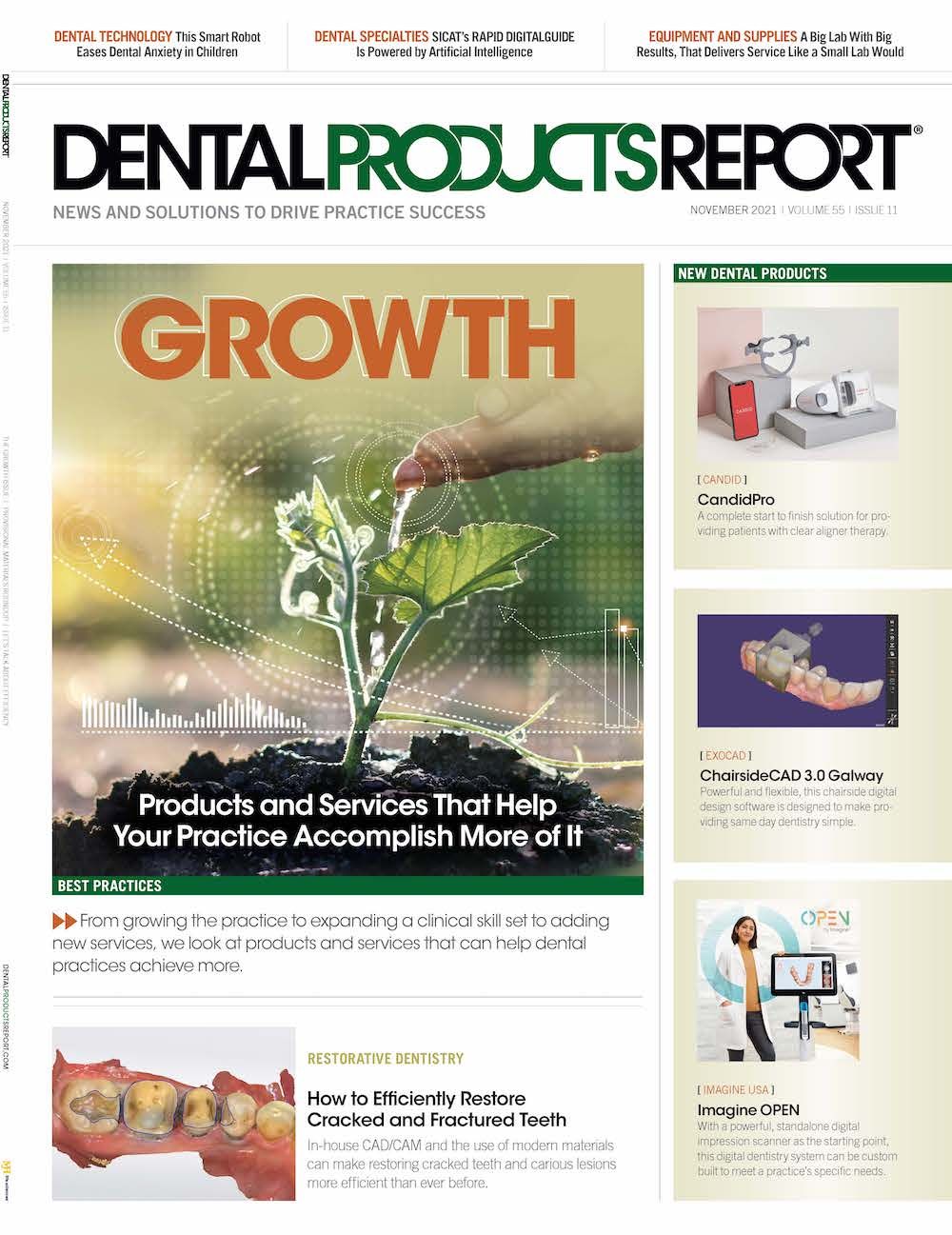Staying on Top of Infrequent Infection Control Practices
Some infection control protocols can be easy to miss, which is why it’s important to stay on top of infrequent tasks.
Staying on Top of Infrequent Infection Control Practices. Photo courtesy of WavebreakMediaMicro / stock.adobe.com.

Once a year, homeowners should perform infrequent chores such as deep clean their dryers, vacuum around vents, and wash curtains or drapes, according to Good Housekeeping. However, many homeowners do not follow such a schedule with those chores. Like these homes, dental practices may find themselves in a similar position with routine infection control tasks that should usually be performed once or twice a year.
Set reminders for yourself
It’s easy to understand why such tasks are forgotten. Even the most well-intentioned infection prevention specialist can overlook these chores because they are performed infrequently. One such task is keeping up on staff’s continuing education (CE) requirements.
“Infection control CE is mandatory for your license renewal in some states,” says Karen Daw, MBA, who is known as the Occupational Safety and Health Administration Lady (OSHA). “Sometimes it’s easy to overlook. For instance, OSHA’s bloodborne pathogens training, which covers bloodborne pathogens and other potentially infectious materials, including saliva and other body fluids, [can easily be forgotten about]. That is mandatory training every single year, and yet it never ceases to amaze me [that so many] practices either wait a few years or weren’t aware it was an annual requirement. Or they might do it in January of one year and then December of the following year. Technically that’s 2 years, according to OSHA.
“Annual safety training must be conducted within 12 months of the last time you did training,” Daw continues. “It’s mandatory every year, but we forget to do it because it’s not something that’s happening with more frequency. I always advise offices, ‘Mark your calendar. As soon as you complete training one year, get the next one’s scheduled with the team….’ At the same time, you can review the exposure control plan with the office too. This is another annual requirement.”
“Most of those things are by a specific date on the calendar,” adds Lisa Kane, DMD, of the Dental Office Compliance of New England. “So yes, every year you should make sure you know when all the licenses are coming up and the certifications. You should make sure you have that documentation well in advance and make sure everyone’s had all their classes and that everyone’s actually renewing their licenses. Also, everyone needs to do an N95 fit test every year.”
Planning and setting reminders, whether it’s on a desk calendar, a planner, or some automated reminder, is a valuable way to keep up with those tasks.
“People should keep yearly logs so they don’t forget about this kind of stuff,” Kane advises. “You’ve got to make sure you check your compressor, your amalgam separator, your fire extinguishers, smoke detectors, and all the emergency supplies. There are also engineering controls that you have to do every year. When we go into an office, we create their logs and standard operating procedures based on Centers for Disease Control [and Prevention] and OSHA guidelines and the instructions for use for the equipment they have. You should always defer to that and see what the recommendations are and make sure [you know] what you’re supposed to be doing.”
The environment
Be cognizant of the work environment and what types of health and safety systems must be regularly maintained. For instance, as the specter of COVID-19 is still haunting us, air quality is in the limelight.
“Because there is such an enhanced focus on aerosols, when I do training or when I speak publicly, I touch on water and air safety as well,” Daw says. “And when we’re talking water safety, I’m talking about whether we are using a product to maintain our dental unit water lines. Are [you] connected to municipal water, which poses a little bit of a challenge as far as being able to shock, or do you have a bottle and use a product to maintain [the lines], or are you going with something like a whole-office filtration system? And do we have a protocol for testing? The Organization for Safety, Asepsis and Prevention published a white paper recommending quarterly testing. For example, some manufacturers’ instructions for use (IFU) have specifics monthly.
“Then, if it passes, you can go to quarterly after that,” she continues. “Some of them are very vague. This is what upsets me: vague IFUs like ‘test as needed.’ What the heck does that mean? Practices need, want, and deserve clear instructions for use. I recommend quarterly testing, unless the manufacturer says more frequently, to make sure the water lines are looking good, not just safe for the patients. But if you’re generating aerosols, is that water that your team is being exposed to safe? We’re talking about the heterotrophic bacterial counts in the water lines, not total dissolved solids. Some offices say, ‘Oh, I stopped testing. I stuck a meter in the water and it says it’s under 200, so I know I have safe water.’ Well what they’re testing is total dissolved solids. They’re not really testing for harmful heterotrophic bacteria, like Legionella [or] Mycobacterium. So testing your water lines routinely is something you should do even if it’s in office. And then I recommend testing annually using a mail-in testing system, so that you have something in writing from an independent, third-party lab that shows your water is safe.”
Infection prevention coordinators at a practice must keep up on many things, so tasks that are seldom performed are easily forgotten. Tapping the skills of an infection prevention consultant is one way to stay abreast of requirements.
“Don’t forget workplace hazard assessments,” Daw recommends. “Did things change since COVID-19? Did the specific occupational hazards in your particular business change in any given year? That’s something you want to routinely review as well. Add that at least to your annual responsibilities, and then, after you’ve done the workplace hazard assessment, conduct a personal protective equipment certification based on that hazard assessment.
“When I mention those 2 terms, this is where people’s eyes start to glaze over,” she continues, “because they [say], ‘Wait a minute. What is this? This is the first time I’m hearing about it.’ So some offices would benefit from working with a consultant when it comes to not only training the office but also helping them with some of these routine assessments and checklists that they should be maintaining. There are a lot of practices that don’t do it because they were never advised to do it. You have offices that just do what I call ‘check off the box’ annual OSHA training and not have worked with a consultant or attended different types of safety and infection control CE. They might not have ever heard about it, and nor do I expect them to know about it, unless they specifically were working with a consultant. And the job of that consultant is to advise them on some of these more obscure requirements that the employer is subject to in a dental setting. So a lot of offices are not doing it, and that’s where I come in. I point that out to them and make sure that we’ve dotted all our I’s and crossed all our T’s.”
The little stuff
Although practices must ensure that the big things such as air and water quality mechanisms and staff CE requirements are up to date, they must not lose sight of the seemingly little things.
“You should be checking the expiration dates on all of your products on a regular basis,” Kane says. “Make sure you have some sort of a plan to get everything done. There’s a ton of stuff you have to do, and it may be daunting. You don’t have to do it all on December 31st. If you have thorough logs and procedures, it will make it more organized, and you can spread tasks out throughout the year.
“When I go in and do a walk through, I see a lot of expired supplies,” she continues. “Anesthesia carpules would be the most common. It’s definitely good to have a written procedure for how you are keeping track of supplies and their expiration dates.”
Keeping up on the nondental parts of the practice is also necessary.
“Look at your labor law posters,” Kane recommends. “Make sure those are up to date every year because they change. I would always check your local dental board website or society and see if there are any changes in any regulations, because things are changing all of the time.”
Ultimately, having a plan and reminders in place to perform these infrequent tasks is key to staying on top of infection prevention matters.
“Don’t wait till the last minute to do everything,” Kane says. “Keep on top of everything throughout the year, and make sure that whatever equipment you have, you’ve looked at the instructions and what the maintenance is so things don’t add up at the end of the year.”
We may not be as diligent as we should be at cleaning behind our home refrigerator or washing the drapes, but failing to carry out similarly infrequent tasks at the dental practice can come at the cost of team and patient safety.
